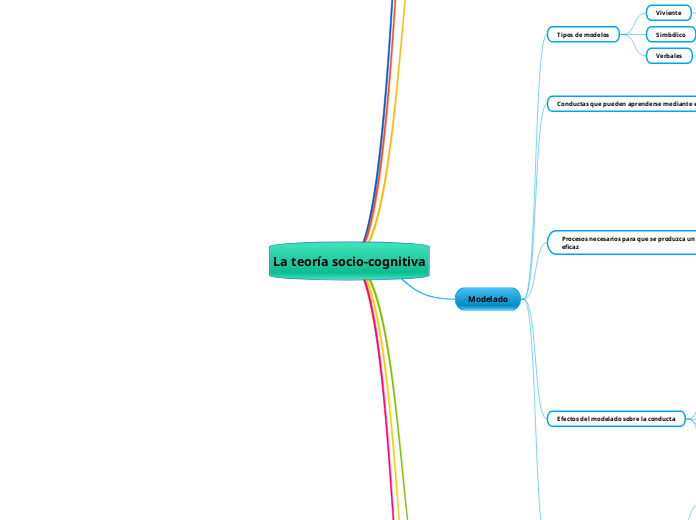da Claudia Paz mancano 3 anni
254
La teoría socio-cognitiva

da Claudia Paz mancano 3 anni
254

Più simili a questo
The Solar System is the gravitationally bound system of the Sun and the objects that orbit it, either directly or indirectly. Of the objects that orbit the Sun directly, the largest are the eight planets, with the remainder being smaller objects, the dwarf planets, and small Solar System bodies.
Control de estímulo autoimpuesto
Autor reforzamiento
Auto supervisión
Auto instrucción
Alabanzas y autocríticas
A partir de los juicios externos
Conciencia de la conducta que necesita mejorar
Conciencia de la conducta que funciona adecuadamente
Utilizar criterios de los modelos
Jupiter is a giant gas world that is the most massive planet in our solar system.
Its swirling clouds are colorful due to different types of trace gases.
And a major feature in its swirling clouds is the Great Red Spot, a giant storm more than 10,000 miles wide. It has raged at more than 400 mph for the last 150 years, at least.
Jupiter has a strong magnetic field, and with 75 moons, it looks a bit like a miniature solar system.
Autoeficacia colectiva
Lo que observan en sus pares influye más
Críticas constructivas
A planet's day is the time it takes the planet to rotate or spin once on its axis.
Write down Jupiter's day measured in Earth days.
Autoeficacia resistente
Aprenden más, si cuentan con autoeficacia
Muestran resiliencia
En elección de áreas que domina
En la que se cree se puede tener éxito
Mars is a cold, desert-like place covered in dust. This dust is made of iron oxides, giving the planet its iconic red hue.
Mars shares similarities with Earth: It is rocky, has mountains, valleys and canyons, and storm systems ranging from localized tornado-like dust devils to planet-engulfing dust storms.
Imitar conductas de personajes famosos
Reproducen conductas congruentes con su estereotipo
Imitar conductas de líderes
Produce resultados deseables
Se observa y se imita conductas casi idénticas
Efecto desinhibidor
Efecto inhibidor
Efecto facilitador
Imitar
Observar
Deseo de demostrar
Coordinación
Repetición
Etiquetas verbales
Códigos mnemotécnicos
Ensayar
Mars has two small moons.
Name these moons.
A los aspectos importantes
Se imita lo que hace el modelo
Se observa y se imita el modelo
How long does it take for Mars to go around the sun?
Modelado cognitivo
Descripciones verbales
Personaje
A planet's day is the time it takes the planet to rotate or spin once on its axis.
Write down Mars's day measured in Earth days.
Persona real
Earth is a water world, with two-thirds of the planet covered by oceans.
It's the only world known to harbor life.
Earth's atmosphere is rich in nitrogen and oxygen.
Its name originates from 'Die Erde,' the German word for 'the ground.'
Earth may once have had two moons, nowadays it has just one.
Modelada
Reforzada
Variables
Estimulo
Influye
Percepción
How long does it take for Earth to go around the sun?
A planet's day is the time it takes the planet to rotate or spin once on its axis.
Write down the Earth's day in hours.
Representaciones visuales
Representaciones verbales
Se recuerda, cuando se repite mentalmente
Venus is Earth's twin in size and has no moons.
Its surface has various mountains and volcanoes. Because of its thick, toxic atmosphere that's made of sulfuric acid clouds, Venus is an extreme example of the greenhouse effect. The average temperature on Venus' surface is 900 F (465 C).
Venus spins slowly from east to west, the opposite direction to most of the other planets.
The Greeks believed Venus was two different objects — one in the morning sky and another in the evening. Because it is often brighter than any other object in the sky, Venus has generated many UFO reports.
El reforzamiento influye en la atención
How long does it take for Venus to go around the sun?
Causar impresión
Castigo vicario
Se observa y se imita, lo que se refuerza
Reforzamiento vicario
Se observa y se imita, la respuesta reforzada
La satisfacción es el refuerzo
Se refuerza la imitación a la moda
Our Solar System has eight “official” planets which orbit the Sun.
Each planet is at a different distance from the sun. Name its position.
Se refuerza la imitación
Mercury is the smallest, only a little bit larger than Earth's moon. Mercury has no moon.
It experiences dramatic changes in its day and night temperatures: Day temperatures can reach a scorching 840 F (450 C), which is hot enough to melt lead. Meanwhile, on the night side, temperatures drop to minus 290 F (minus 180 C).
It also has a very thin atmosphere of oxygen, sodium, hydrogen, helium, and potassium and can't break-up incoming meteors, so its surface is pockmarked with craters, just like the moon.
El conocimiento de reforzamiento o castigo y las expectativas futuras de estos elementos impactan en la conducta y en el aprendizaje
How long does it take for Mercury to go around the sun?
El reforzamiento y el castigo ejercen un efecto, sobre el aprendizaje
A planet's day is the time it takes the planet to rotate or spin once on its axis.
Write down Mercury's day measured in Earth days.
El aprendizaje puede reflejarse en el momento, después o nunca